This Dijon Rosemary Crusted Prime Rib Roast is perfect for a cozy family meal or holiday dinner. A standing rib roast is coated in a simple rosemary and dijon mixture before roasting away in the oven. The pan dripping are combined with pinot noir for a delicious Au jus.
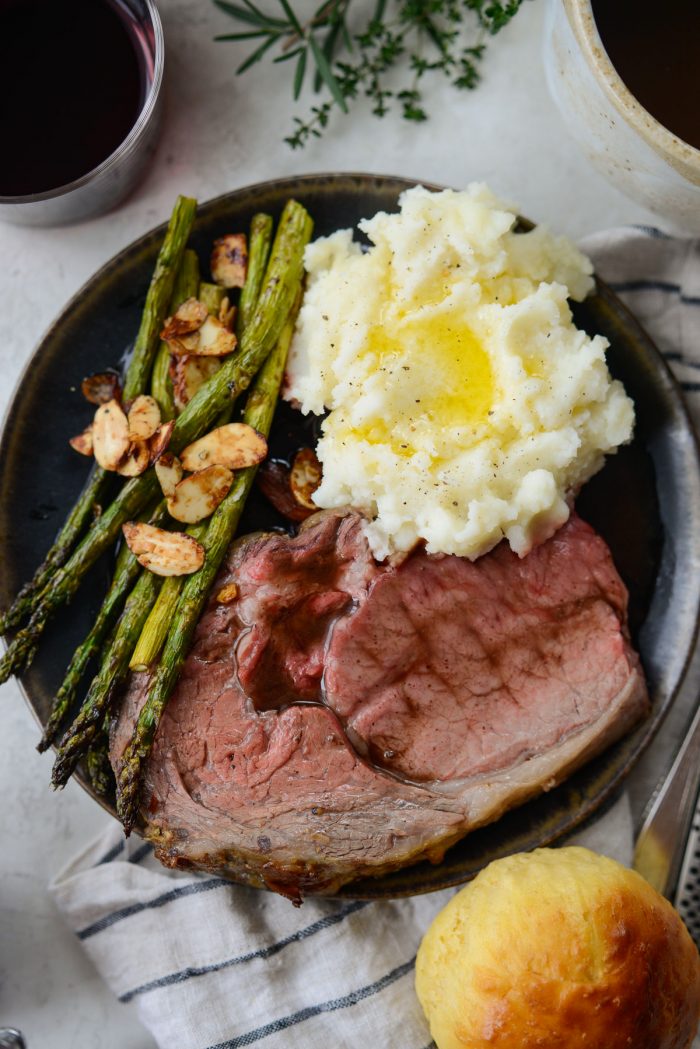
It’s 3 days post holiday and I’m still up to my eyeballs in prime rib.
I mean, life could be worse. Like, I could be up to my eyeballs in cookies. Wait, that wouldn’t be bad either.
To say I love this prime rib recipe is an understatement. It’s so easy (true!) and turns out incredibly delicious every single time. Back in 2011, I found this recipe in a Cooking Light Magazine. It looked simple enough and so I made it for Christmas Eve dinner. Everyone loved it.
It’s been 9 years and I’ve made it every Christmas Ever since.
To Make This Dijon Rosemary Crusted Prime Rib Roast You Will Need:
- standing rib roast
- garlic
- thyme
- rosemary
- dijon mustard
- olive oil
- kosher salt
- coarse ground black pepper
- olive oil spray
- low-sodium beef broth
- pinot noir (make sure it is one you like to drink!)
This is what 8 pounds of prime rib looks like. I took this out of the fridge and let it sit out on my counter for 1 to 1-1/2 hours to take some of the chill off.
What is a standing rib roast?
A standing rib roast is a bone-in prime rib roast. However I’ve made this with a boneless prime rib roast and it was still excellent. Time will vary depending on which one you use.
While the roast is on the counter, start making the dijon rosemary mixture. Throw 6 cloves smashed and peeled garlic into your mini food processor.
Pulse until finely minced.
Next throw in 2 tablespoons chopped thyme leaves and 1-1/2 tablespoons chopped fresh rosemary.
Next add in 1/3 cup dijon mustard and 1-1/2 tablespoons of olive oil.
Secure the lid and pulse until all the ingredients are combined.
This can be made a day in advance which will save you some time.
Which is better, Bone-in or a boneless prime rib roast?
I’ve done both. Boneless will take less time roasting while bone-in will take longer. However, if using a bone in standing rib roast make sure to ask your butcher to remove the bones and then tie them back up. The bones add flavor, especially to the drippings which you use for the au jus. Because I picked up my prime rib late Sunday evening, the butcher was gone for the day. So I removed and tied my own. It’s nothing a sharp knife and kitchen twine can’t handle.
If needed, trim off any thick pieces of fat and season it generously with kosher salt and fresh black pepper.
Using your impeccably clean hands, cover the entire roast with the Dijon rosemary rub.
Smells SO good!
Adjust oven rack to be certain the roasting pan with the roast will fit before preheating your oven to 400℉ (or 200℃). In my small oven, I move it to the lowest rack.My wall oven is small so I have to remove a rack so the roast will fit. Spray your roasting rack with olive oil, this will insure the roast will release easily from the rack after roasting.
Place the roast (fat side up) onto the roasting rack that is set into your roasting pan.
Insert an oven-safe digital thermometer (linked in printable recipe) in the center of the thickest part. If using a bone in roast, keep in mind the bones should be considered part of the roast.
Pro Tip (please read)!
If the thermometer is too shallow you will not get an accurate read, which could result in an undercooked prime rib. Which is no bueno. So Make sure it’s in inserted correctly before roasting.
Set the thermometer to alert you when the internal food temp of the prime rib is 135℉ (or 57℃) for medium rare. I love this thermometer because of this feature! I have linked it in the recipe printable.
Slide the roast onto the bottom rack of your preheated oven. Roast for 30 minutes at 400℉ (or 200℃). After the 30 minutes, without opening the door, reduce the oven temp to 350℉ (or 180℃) and continue roasting for another 30 minute. You don’t want to open the oven door because you need that precious heat to form the crust on the outside of the prime rib.
After the first hour is up, remove the roast and pour 2 cups of beef broth into the pan. Slip it back into the oven and continue to roast until the internal temp and digital thermometer reads 135℉ (or 57℃) for medium rare.
Internal Temperature Cooking Chart:
Extra Rare (bleu): 80℉ to 100℉ (or 26℃ to 38℃)
Rare: 120℉ to 125℉ (or 49℃ to 51℃)
Medium Rare: 130℉ to 135℉ (or 55℃ to 57℃)
Medium: 140℉ to 145℉ (or 60℃ to 63℃)
Medium-Well: 150℉ to 155℉ (or 6℃5 to 69℃)
Well Done: 160℉ and above (or 71℃ and above)
By now your house should smell amazing and a delicious crust has formed on outside of the prime rib. If you notice a darker crust in spots on yours, don’t fret. This is normal and usually comes off when removing the string or when slicing. Like I mentioned earlier, my oven is tiny, so this could be only my issue.
Remove the prime rib roast from the roasting rack and place onto a carving board. Loosely cover with foil and let it rest for 15 to 20 minutes, so the juices can redistribute. The roast’s internal temperature should raise a few degrees as it rests.
In the meantime, make the pinot noir au jus.
Scrape the pan drippings into a saucepan. Bring to a simmer before pouring in 2/3 cup Pinot Noir. Use a pinot you like to drink.
Alternatively, this could be done directly in the roasting pan, over two burners. However, I find the saucepan method easier.
Continue whisking until the au jus reduces to roughly 3/4 cup. I just eye ball it.
Slice up the prime rib roast roughly 1/2-inches thick per person.
Serve and pour a few spoonfuls of the Pinot Noir au jus over top. To. Die. For.
What side dishes go with Prime rib?
- mashed potatoes
- twice baked potatoes
- brussels sprouts
- green beans
- asparagus
- sea salt rosemary dinner rolls
- brioche dinner rolls
Recipes To Make With Leftover Prime Rib:
- Sheet Pan Prime Rib Breakfast Hash
- Serve rewarmed with fried eggs and toast
- Prime Rib and Barley Soup
- Cheesesteaks or French Dip Sandwiches
Enjoy! And if you give this Dijon Rosemary Crusted Prime Rib Roast recipe a try, let me know! Snap a photo and tag me on twitter or instagram!
Dijon Rosemary Crusted Prime Rib Roast with Pinot Noir Au jus
Ingredients
- 8 pound standing rib roast, or boneless - times will vary
- 1 teaspoon kosher salt
- 1 teaspoon freshly ground black pepper
- 6 cloves garlic, smashed and peeled
- 1/3 cup Dijon mustard
- 2 tablespoons chopped fresh thyme
- 1½ tablespoons of chopped fresh rosemary
- 1½ tablespoons olive oil
- olive oil spray
- 2 cups beef broth
- 2/3 cup quality pinot noir
Equipment
Instructions
- Let the roast sit at room temperature for 1 hour to 1 hour and 30 minutes.
- Adjust oven rack to be certain the roasting pan with the roast will fit before preheating your oven to 400℉ (or 200℃). In my small oven, I move it to the lowest position.
- Spray your roasting rack with cooking spray.
- In a mini food processor pulse the peeled garlic cloves until minced. Add in the chopped thyme, chopped rosemary, mustard and olive oil. Pulse until combined.
- Trim off any excess fat off of the roast and season the entire thing with the kosher salt and black pepper. Use your hands and rub the Dijon mixture over the entire roast.
- Place the roast on the prepared roasting rack and set into a large roasting pan and insert an oven-safe digital thermometer into the center of the thickest part of your roast. (*see notes)
- Cook at 400℉ (or 200℃) for thirty minutes - this will develop a good crust. Without opening the door, reduce the heat to 350℉ (or 180℃) and cook for another 30 minutes.
- Remove the roast and pour 2 cups of beef broth into the roasting pan. Return the roast to the oven to cook until the internal temp registers at 135℉ (or 57℃) for medium rare. (see notes)
- Remove the roast and place on a carving board and cover it loosely with foil. Allow the roast to rest 15 to 20 minutes. Meanwhile make the Au jus.
- Pour the drippings into a sauce pan (or make it directly in the roasting pan over two burners) and bring to a boil. Pour in the 2/3 cup of Pinot Noir and cook, whisking often for 6 minutes or until it reduces to roughly 3/4 of a cup.
- Remove the string from around the roast and discard. Remove the bones and set aside.
- Slice the prime rib 1/2-inch thick (or desired thickness) and serve with a few spoonfuls of the pinot noir au jus over top.
Notes
Internal Temperature Cooking Chart:
Extra Rare (bleu): 80℉ to 100℉ (or 26℃ to 38℃) Rare: 120℉ to 125℉ (or 49℃ to 51℃) Medium Rare: 130℉ to 135℉ (or 55℃ to 57℃) Medium: 140℉ to 145℉ (or 60℃ to 63℃) Medium Well: 150℉ to 155℉ (or 6℃5 to 69℃) Well Done: 160℉ and above (or 71℃ and above) Nutrition Disclaimer: All information presented on this site is intended for informational purposes only. I am not a certified nutritionist and any nutritional information shared on SimplyScratch.com should only be used as a general guideline.Buy the Cookbook: Simply Scratch : 120 Wholesome Homemade Recipes Made Easy Now available on Amazon »
THANK YOU in advance for your support!
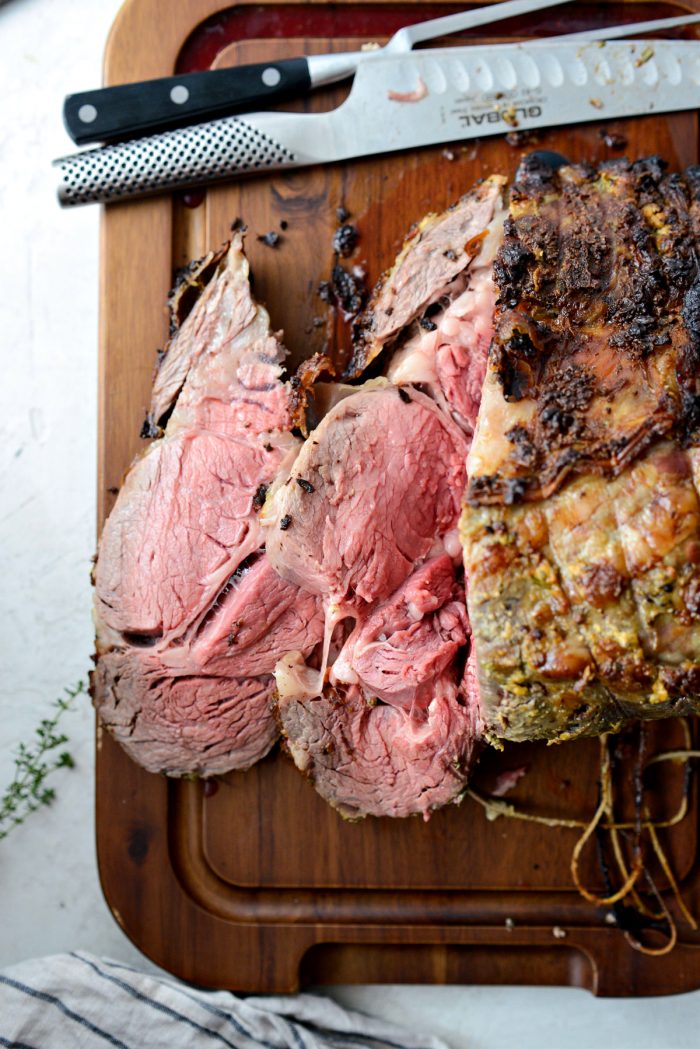
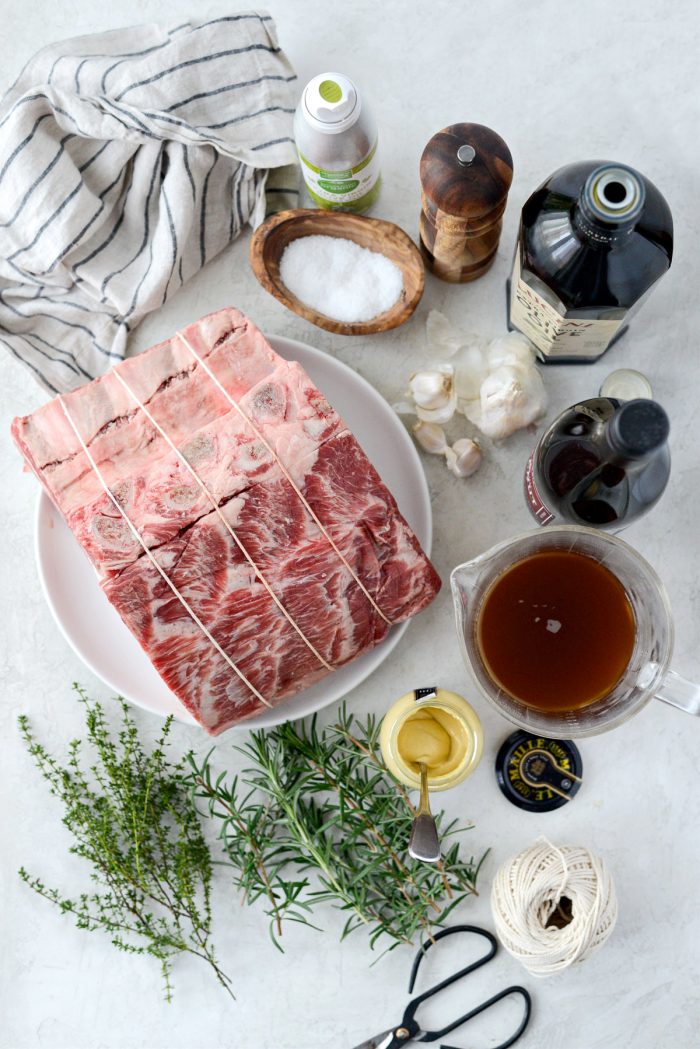
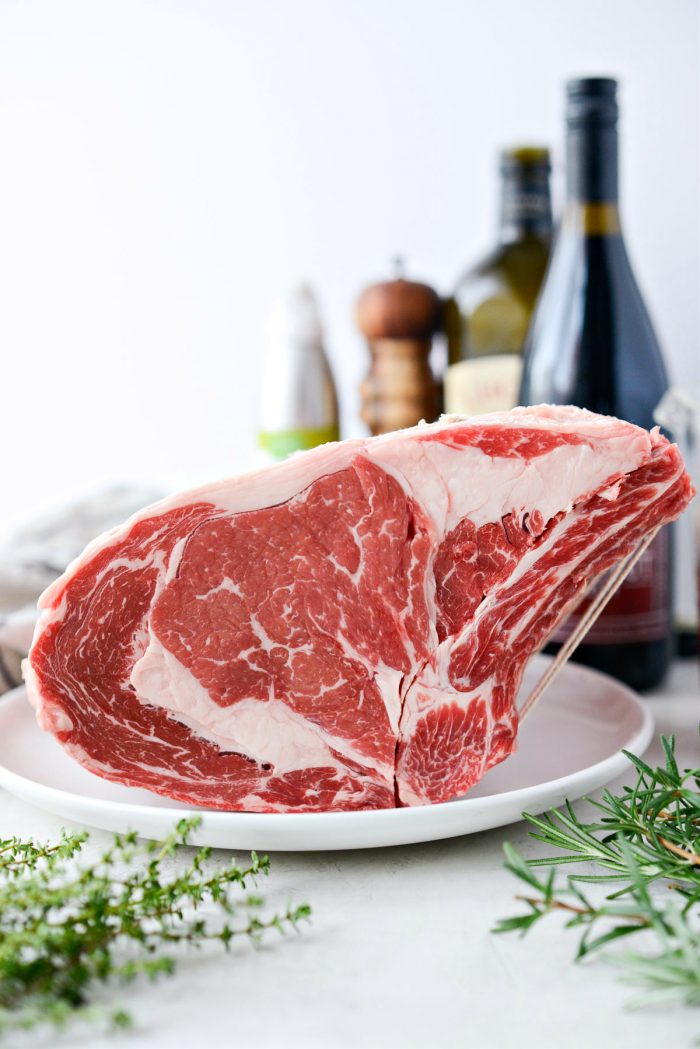

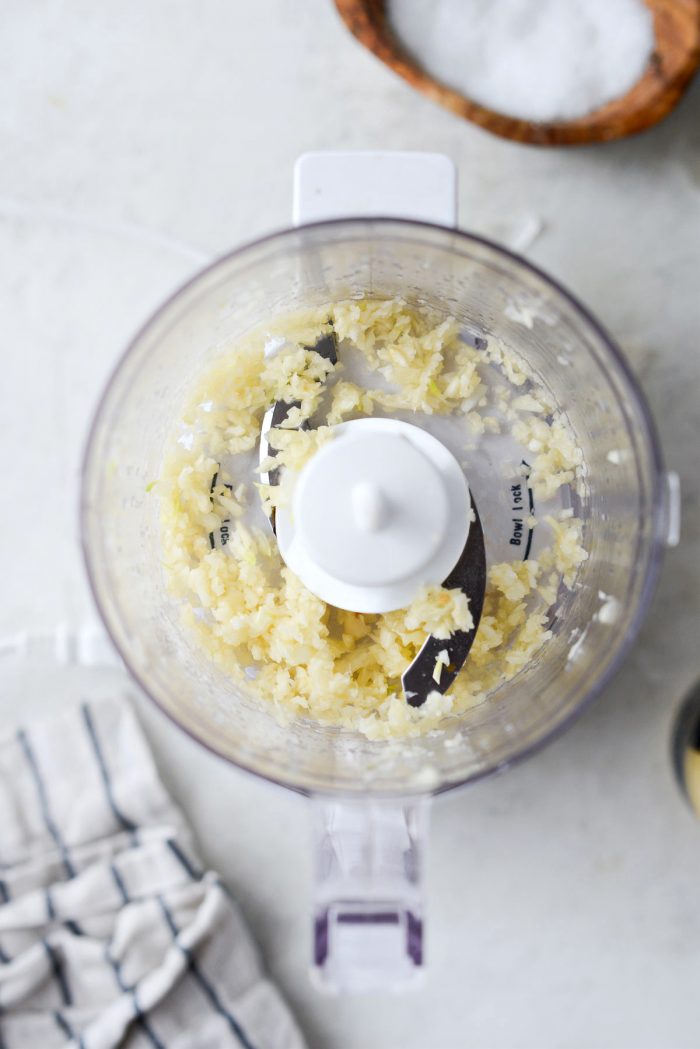
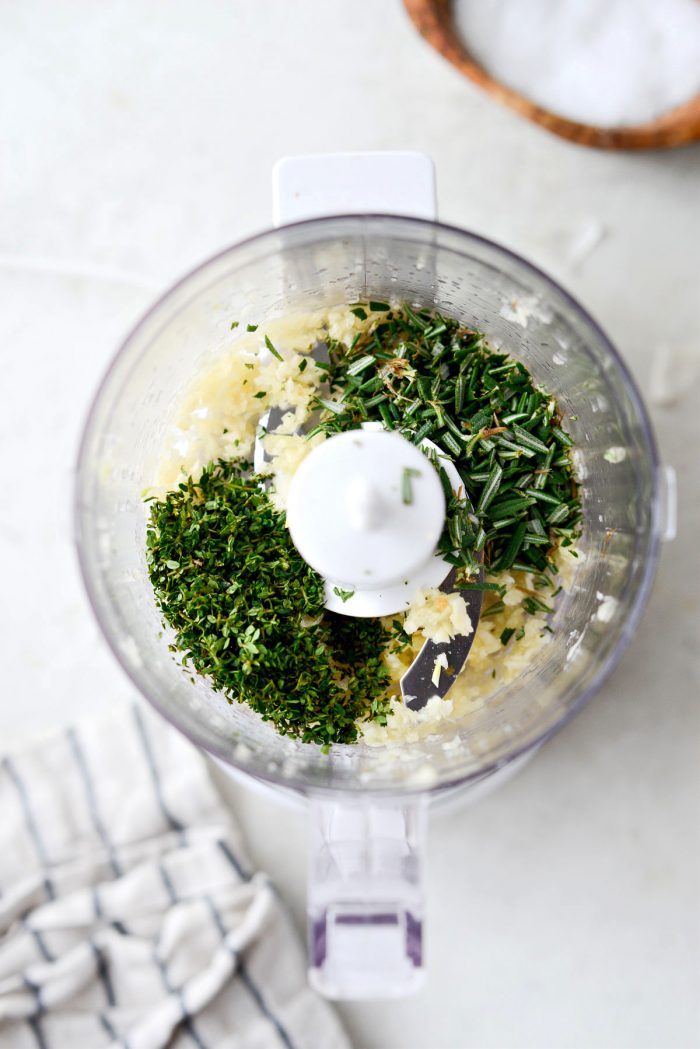
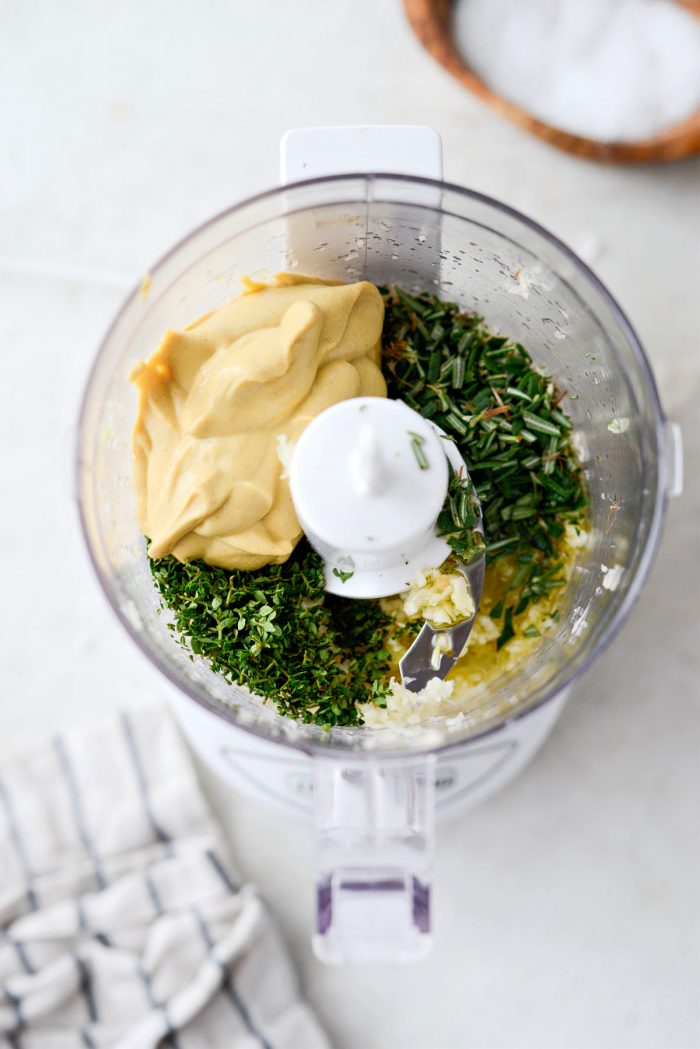
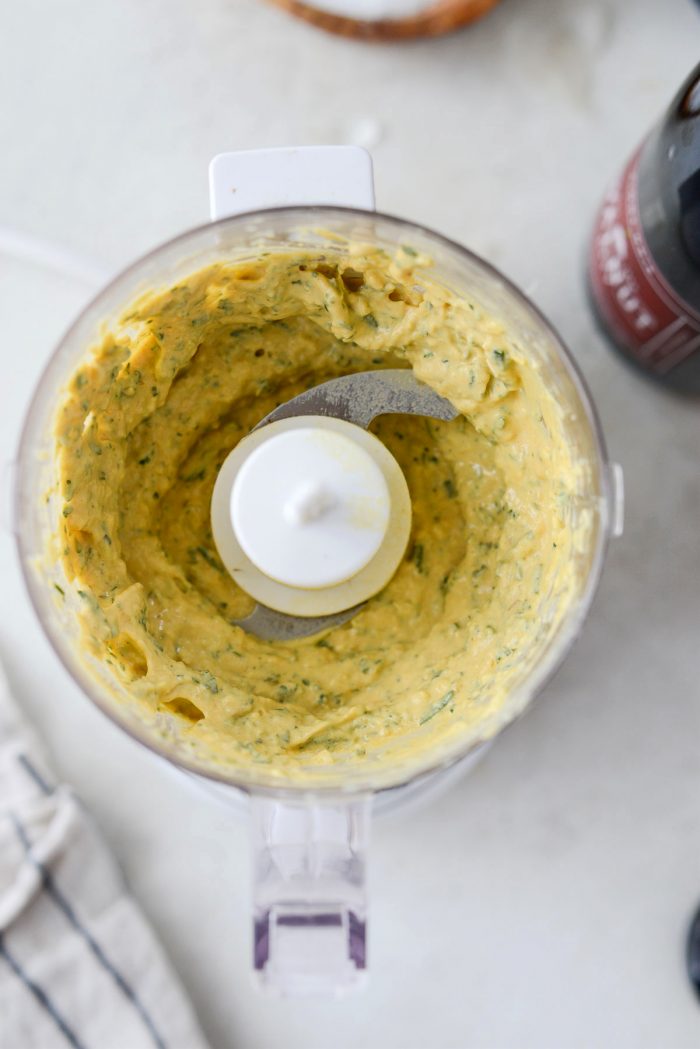
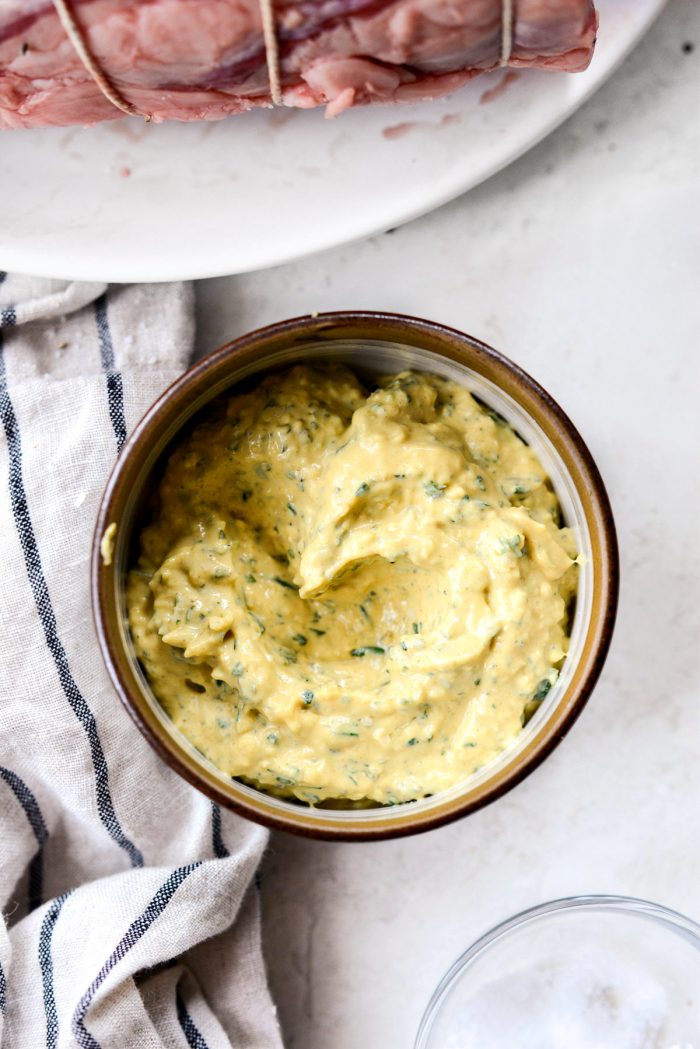
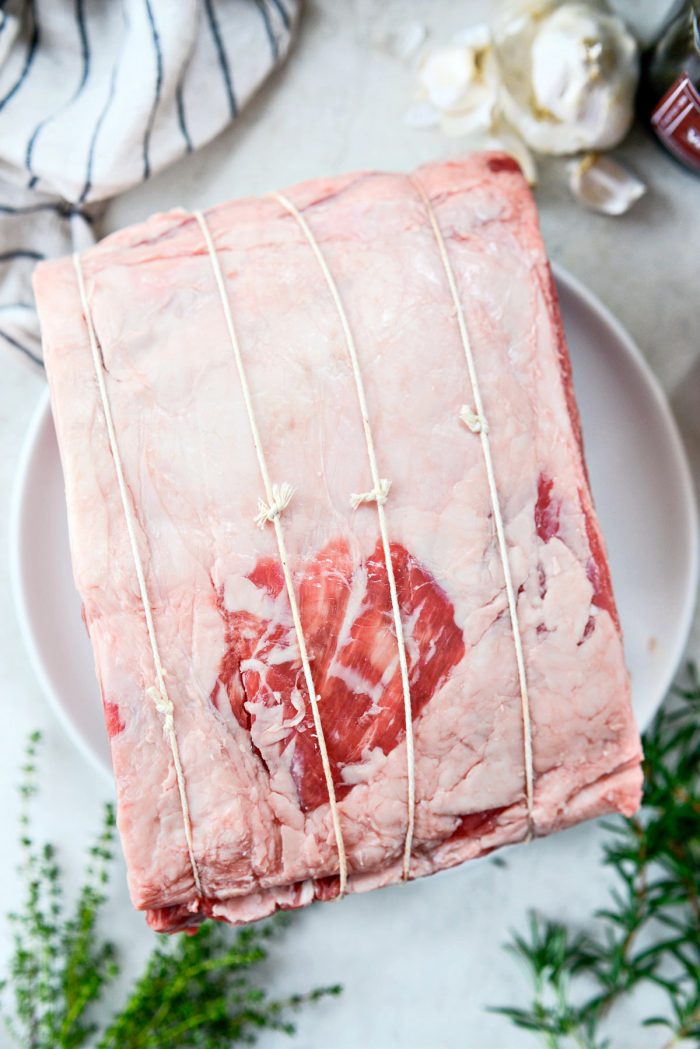
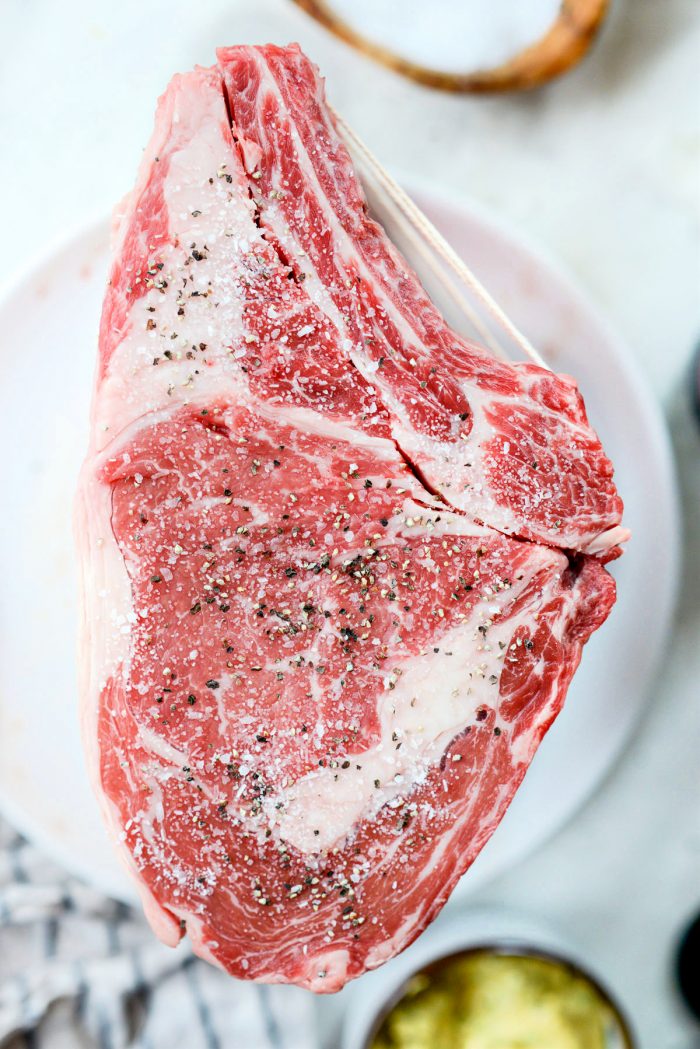
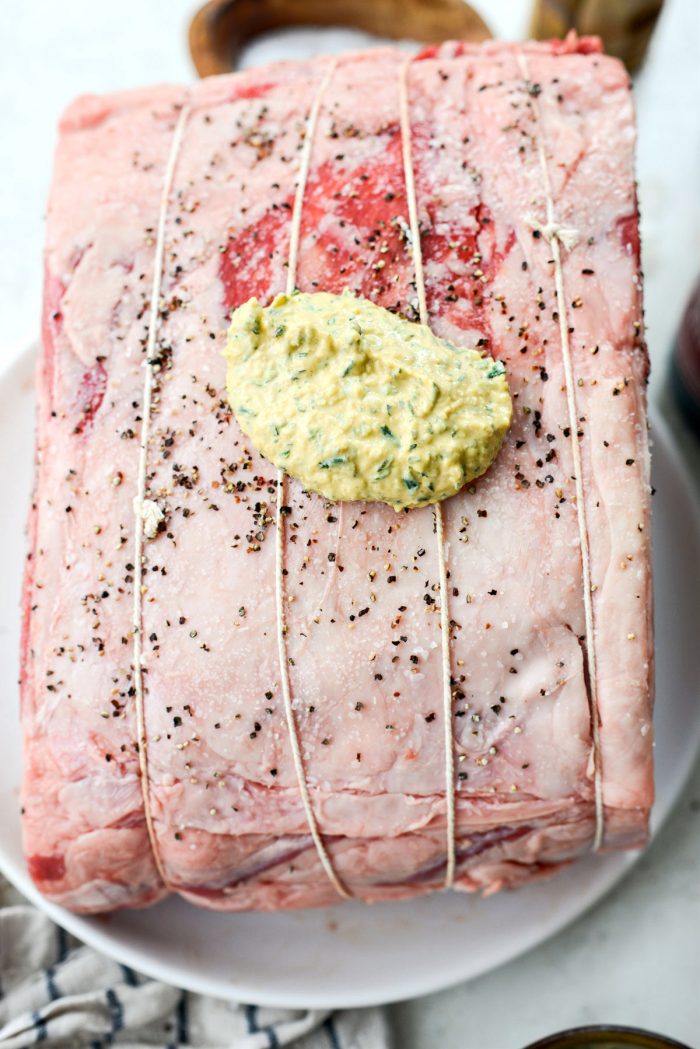
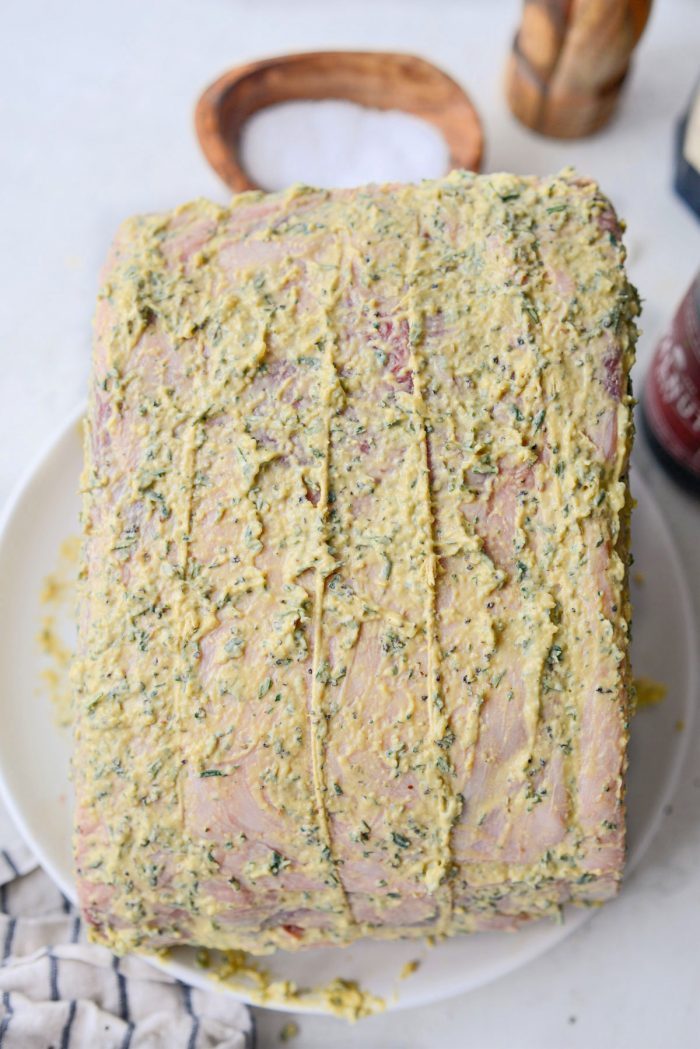
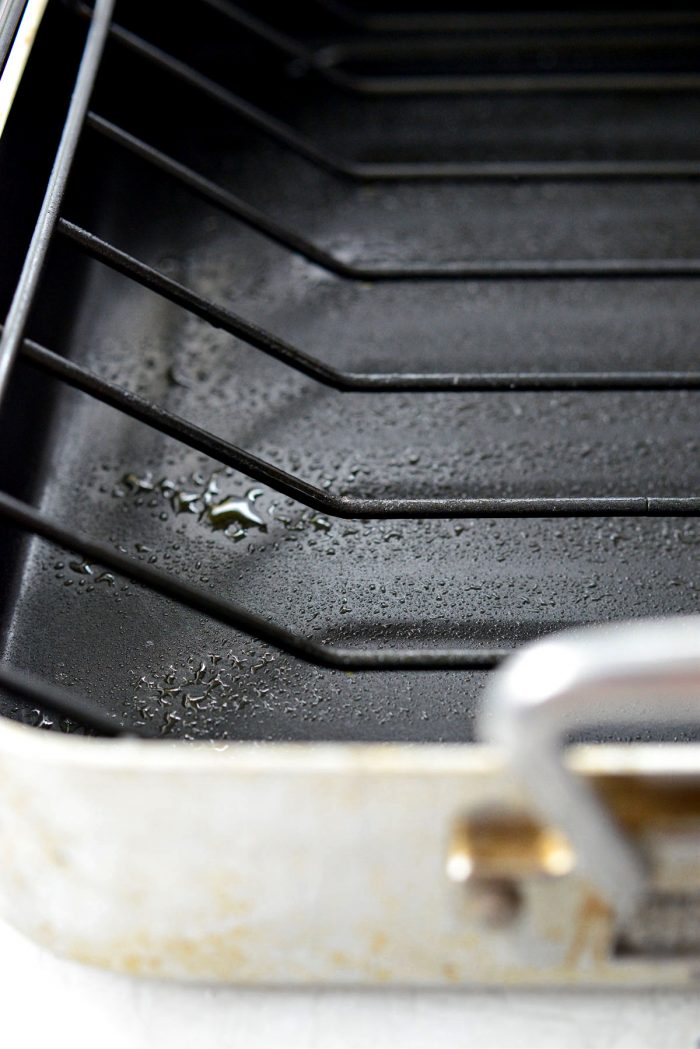
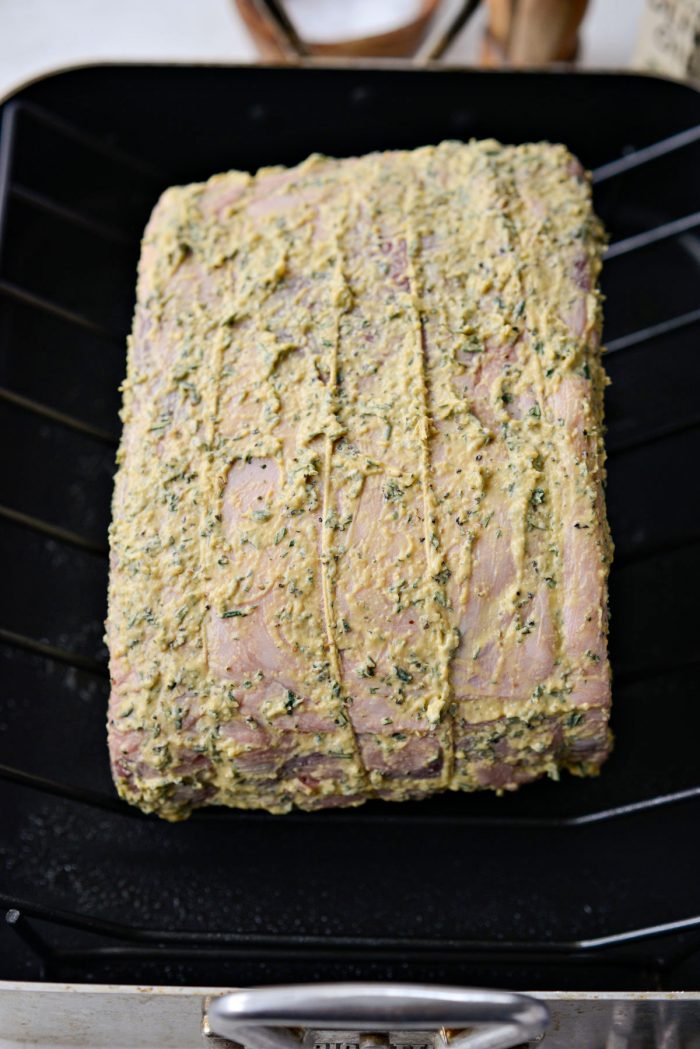
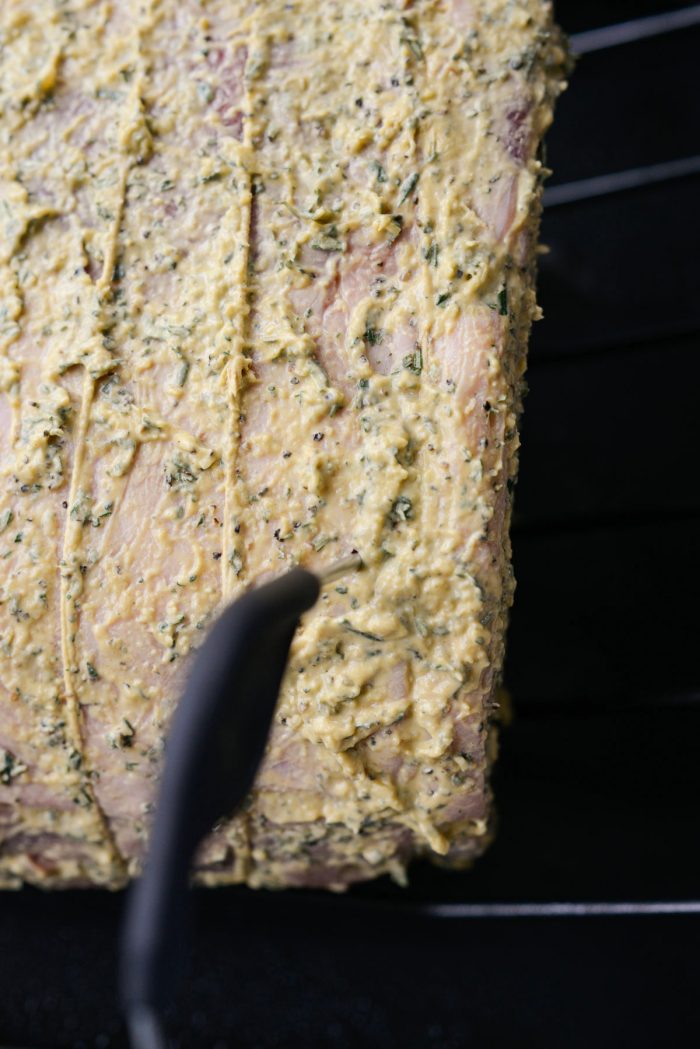
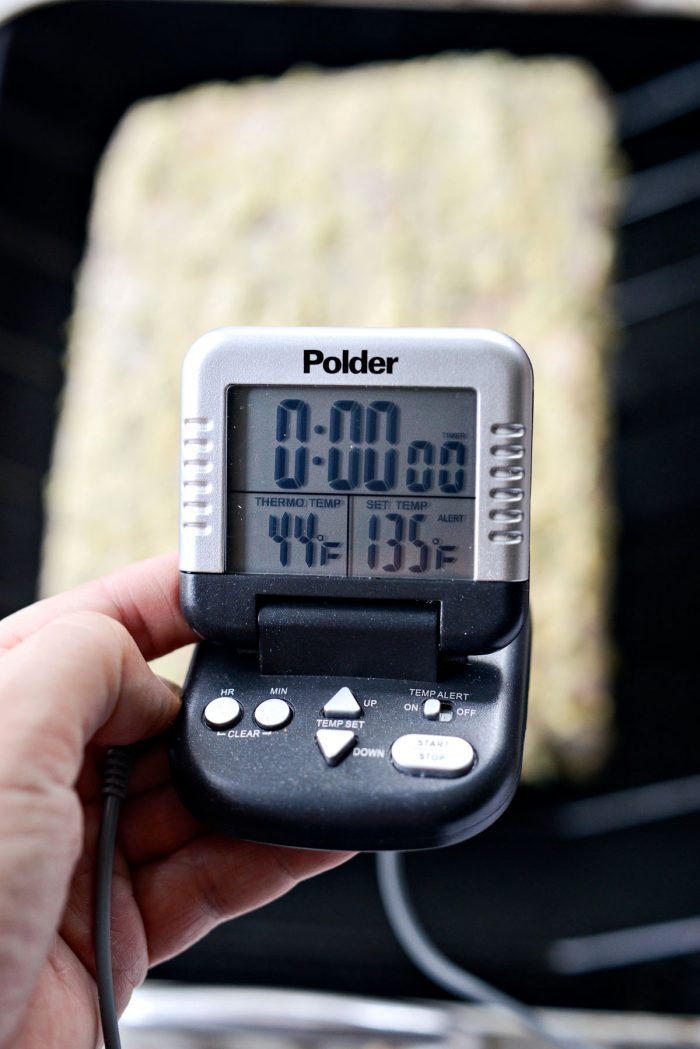
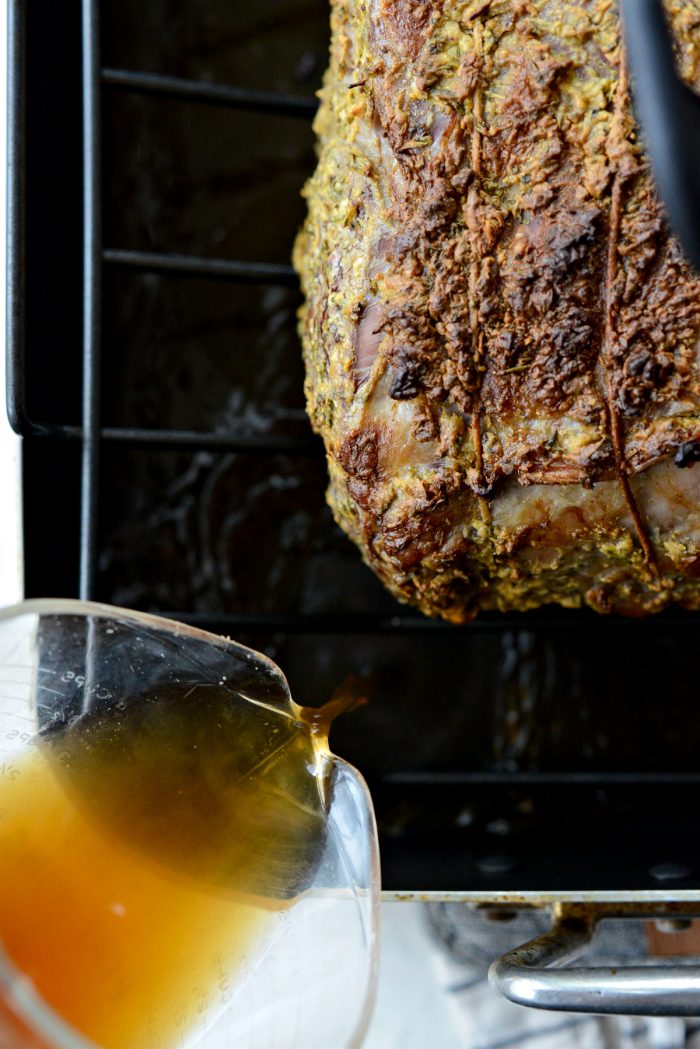
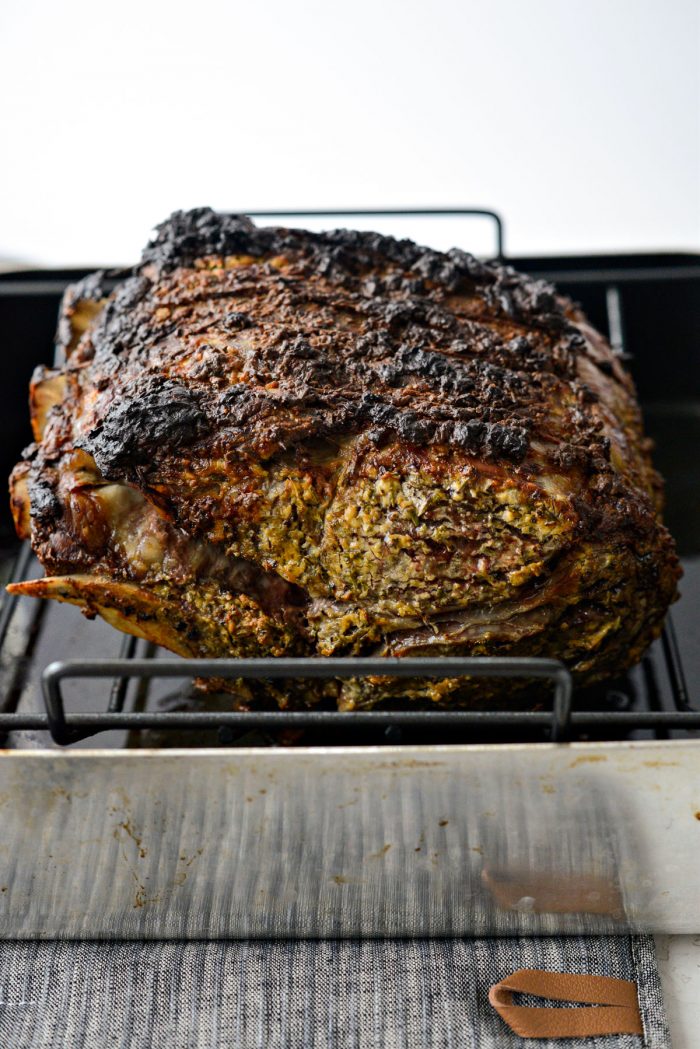
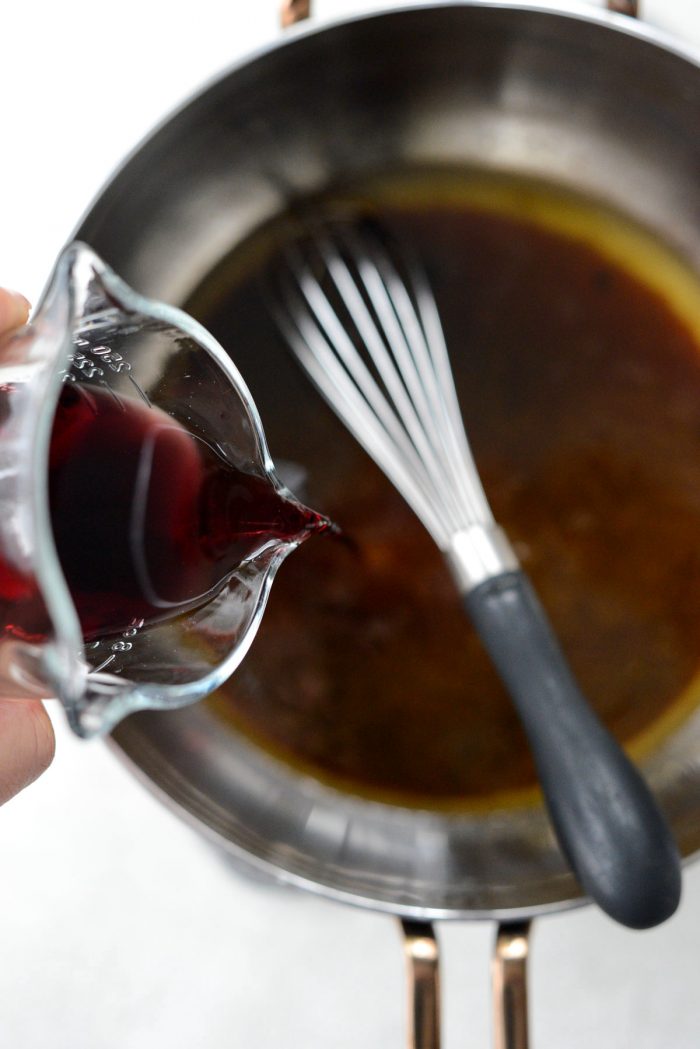
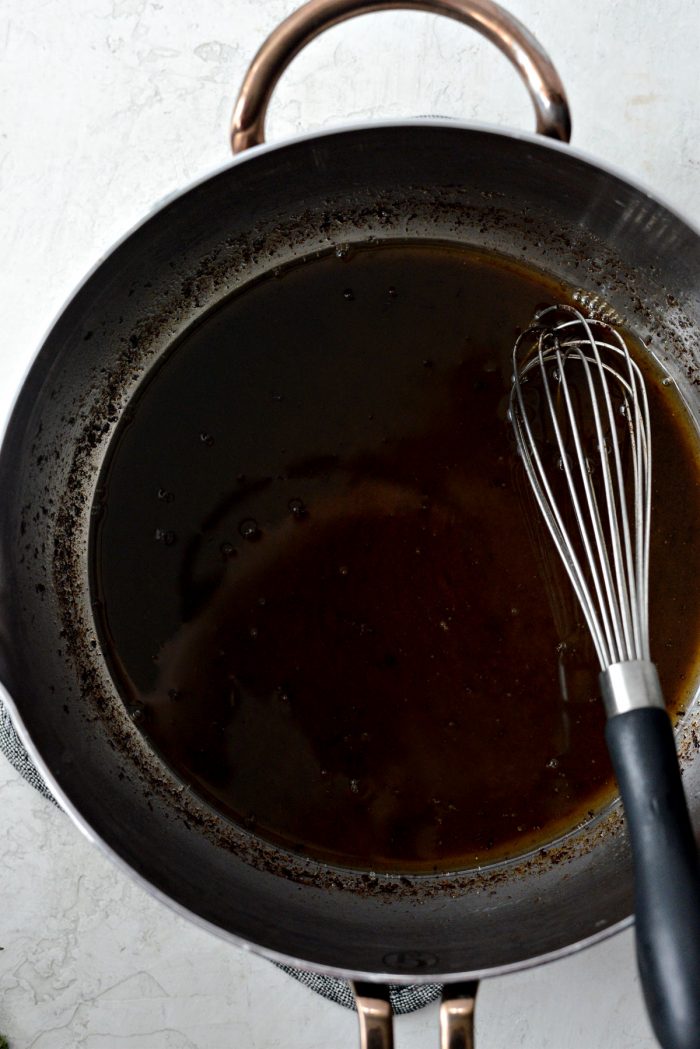
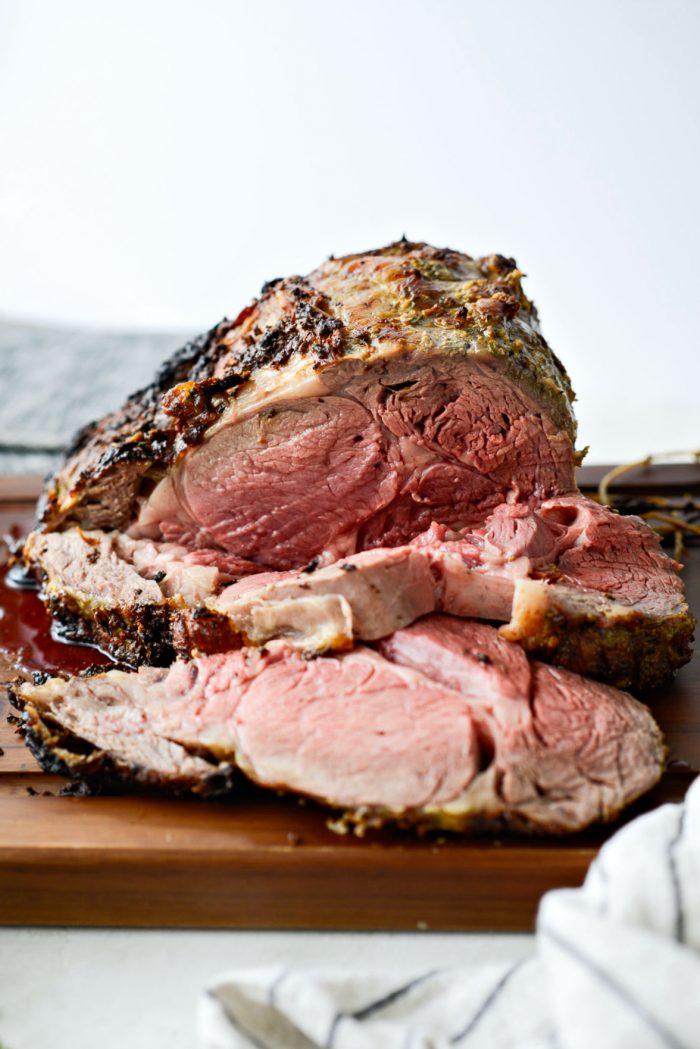
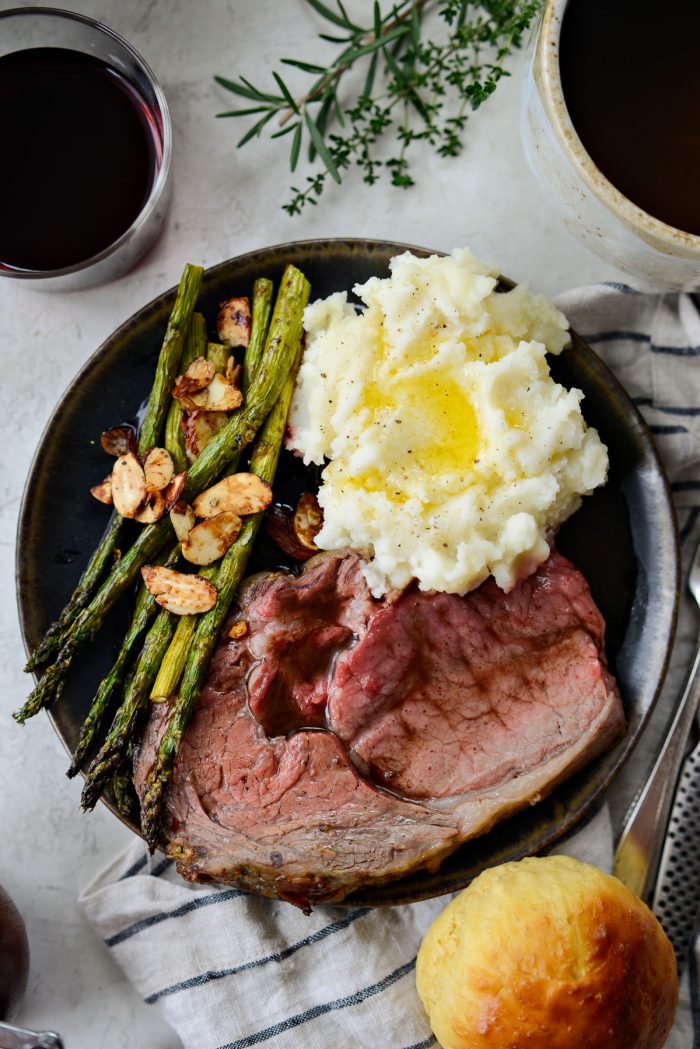
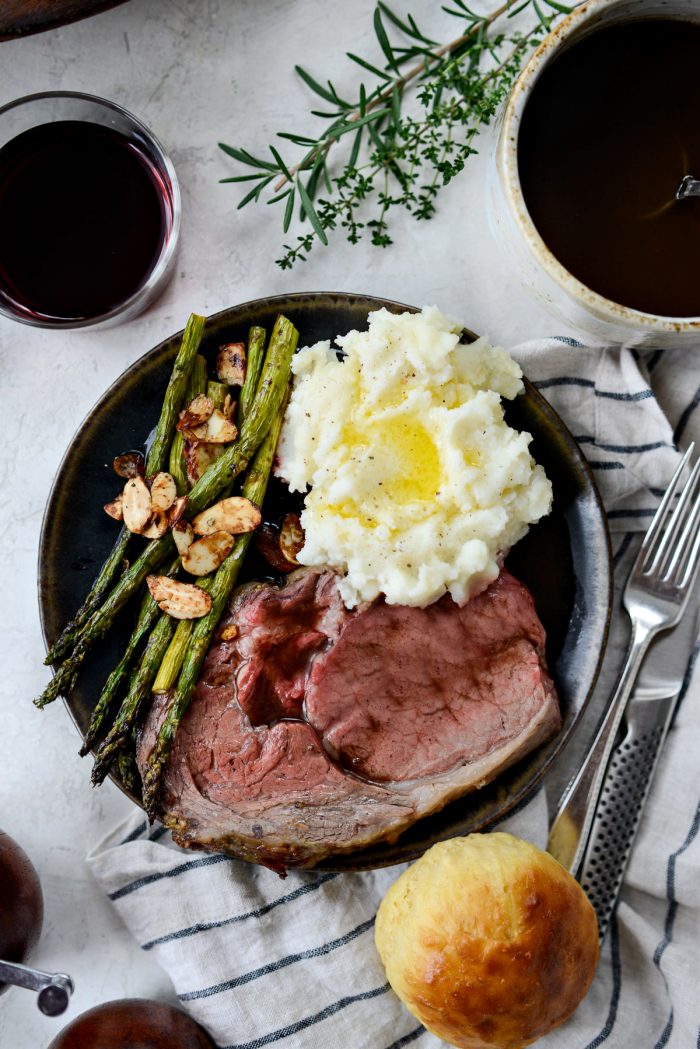
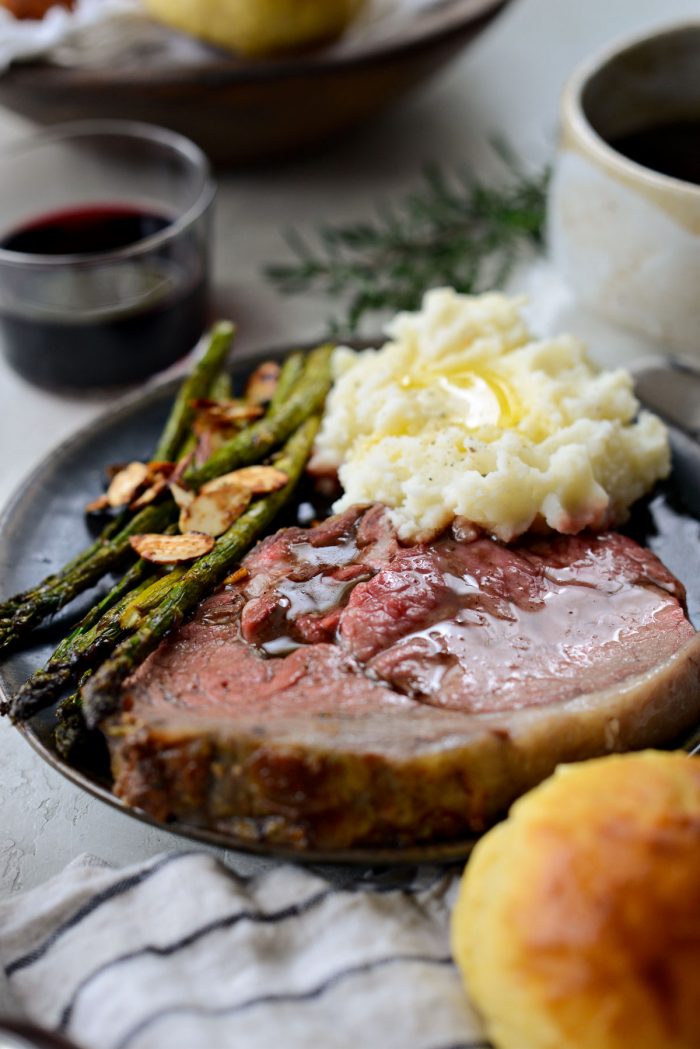
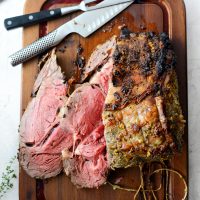



Your pictures are stunning and great recipe.
I am sold and you are my hero! 🙂
I can SMELL the beautiful roasting piece of meat! Have a wonderful New Year, Laurie, and looking forward to what exciting things will happen coming year with you and your blog! 🙂
Thank you Kay! Happy New Year!
Holy beautiful piece of beef! I am now craving prime rib!
This looks out-of-this-world. I love the flavors you chose!
I have a standing rib roast in the freezer, and all the other ingredients on hand. Was planning on just roasting it with salt & pepper – but now I can’t wait to try this rendition. Thanks!
That is gorgeous! And, you’re nuts those photos are stunning. If anyone can get a big hunk of meat to mug for the camera, it’s you. Beautiful job.
Thanks Jackie! You are too nice 😉
Wow, I’m actually at a loss for words over this prime rib, it looks so delicious! If these are the leftovers you’re eating, then you really have it lucky!
Pinot au jus you’re my kind of lady!! Prime rib is one of my faves and my boyfriend goes crazy over it. We’d go crazy over the au jus, too, so best believe we’ll be making your recipe! Your PR looks fabulous by the way…I know meat doesn’t look so hot when it’s been captured in a photograph but I think you did an excellent job!
I’m wishing I was up to my eyeballs in your prime rib right now!
Yum! Comfort food at its best!
Beth, do you prefer bone-in or red meat only?
This sounds really incredible – that rub sounds so flavourful and the prime rib looks so tender and delicious. Happy new year!
LOVE prime rib, but never even thought about making it at home. Yours looks gorgeous, and sounds perfect!
Oh my what beautiful pictures. I can smell the roast from over here!
This looks like one amazing meal! I love EVERYTHING about it!
Looks so delicious!
I love your blog! So many great articles… I thought you might like to know that http://www.Dentist.net is offering 10% off their products with the code ORALCARE 🙂 Happy New Years!
Looks amazing! I LOVE prime rib but have never made it before…need to now after seeing how easy you make it look!
It’s amazingly easy for being so fancy! Happy New Year Julie! 😀
Thank you! Where do you buy your prime rib?
After reading tons of recipes, I decided on this one because it looked so easy. I made this last night with a seven pounder and it was absolutely delicious. Everyone raved about it! The “rub” was so good and our dinner guests were fighting over it. Thank you so much for sharing this…it is a keeper!
We make this every time now. Magnificent! I keep going back and it’s great for those late night snacks. Having this for Easter. Encore, Encore!
I’m so happy to hear that, Robert!
I followed this recipe to a tee with a 6 lb roast and it came out Moooing raw! The times are way off!! Christmas meal ruined! had to pan fry to get to medium rare!
Did you read step 7 to wait until the internal temp is 135 degrees? I’m having it again for dinner tonight as a late Christmas dinner. Sorry to hear something didn’t work.
I add shallots in with the rosemary rub. Delish!
Cooked it for an extra hour at 350 and it turned out perfect! Again! 2 for 2!
Beth, do you prefer bone-in or red meat only?
Made it again in 2020 and added a couple of finely chopped shallots to the mustard rosemary mix. Again as all the times before it definitely called for 2nds. I did finally discover to put the Polder thermometer in the meat, in the oven, duh. It was a long excruciating anticipation watching the temp gauge get to the required amount. Roast is perfect!
Christmas Day 2022. Making it yet again in the roaster as I dont trust the gas oven in the new place yet. Still awesome as always. Merry Christmas!
Just made it again, (twice this month). I add shallots to the mix and it’s always perfect. Thanks again!
Guess what I’m making tomorrow, (Christmas day)?